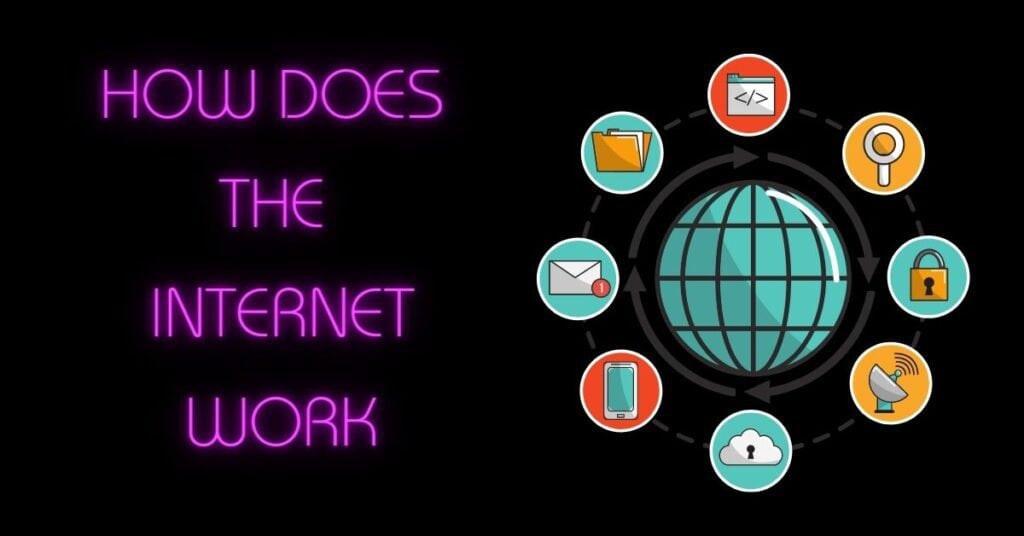Introduction:
Welcome to an exciting journey into the depths of the internet! In this blog post, we’ll demystify the inner workings of the internet, uncovering its magic step by step. So, let’s dive in and explore the wonders of the Internet!
1. What is the Internet?
The Internet resembles a huge network of interconnected computers. It makes it possible for people all over the world to communicate, exchange knowledge, and access a variety of resources. Simply see it as a global web connecting computers, smartphones, tablets, and other gadgets.
2. Internet Service Providers (ISPs): The Gateways
We require an Internet Service Provider (ISP) in order to access the Internet. The gateways that link our gadgets to the internet are analogous to ISPs. To establish this link, they make use of a variety of technologies, including fiber-optic cables, satellite connections, and even wireless transmissions. It’s similar to having a phone connection that gives us access to a wide informational network.
3. Sending and Receiving Data: Packets
When we use our devices to send emails, watch videos, or browse the internet, they share data with other computers all over the world. Packets, the little chunks of information that make up this information, are used. A portion of the data, the destination address, and other relevant metadata are all included in each packet.
4. Routers: The Traffic Directors
We rely on specialized hardware called routers to make sure that our data packets get to their intended location. On the internet, routers function like traffic directors. They look at each packet’s destination address to determine the optimum route for getting it to its intended receiver. Depending on where the sender and receiver are located, these pathways can be brief or lengthy.
5. IP Addresses: Identifying Devices
The term “IP address” (Internet Protocol address) refers to the specific identifying number that each internet-connected device, including computers, smartphones, and tablets, has. Each device has what is like a digital address, which aids the routers in determining where to transmit packets. In the digital realm, IP addresses are like our house addresses.
6. Domain Names: Making the Internet User-Friendly
It can be difficult to remember lengthy numerical sequences (IP addresses) for every website. Domain names play a role in this. IP addresses are represented by domain names, which are human-readable addresses. For instance, we can type “google.com” in the browser instead of “216.58.216.164.” The internet is substantially more navigable and user-friendly thanks to domain names.
7. Protocols: The Internet Language
They must adhere to a standard set of guidelines in order for various devices to be able to communicate with one another. They are known as protocols. On the internet, protocols specify how data is sent, received, and interpreted. Protocols include SMTP (Simple Mail Transfer Protocol) for email transmission and HTTP (Hypertext Transfer Protocol) for online browsing.
8. DNS (Domain Name System): Domain Name Resolution
Human-readable domain names are converted into their associated IP addresses in the background by the Domain Name System (DNS). This translation is handled by DNS servers, which enables us to access websites by typing in domain names rather than IP addresses. The domain name hierarchy aids in the management and organization of this enormous system.
9. TCP/IP (Transmission Control Protocol/Internet Protocol)
TCP (Transmission Control Protocol) is responsible for making sure that data is sent reliably from one computer to another. It does this by establishing a connection between the two computers and keeping track of the data being sent. If any packets of data are lost along the way, TCP will request the sender to resend them. This ensures that the data arrives safely and in the correct order.
10. Internet Backbone: High-Speed Connections
The basic infrastructure of the Internet is made up of high-speed, interconnected networks, which together make up the Internet backbone. The vast bulk of internet traffic is transported across these backbone networks, which are run by significant ISPs and telecommunications providers. They offer the high-speed connections necessary for the quick and effective movement of data across the Internet.
11. Content Delivery Networks (CDNs): Optimizing Content Delivery
Content delivery networks (CDNs) are distributed networks of servers that are carefully positioned throughout the world. Users can access website material more quickly and reliably thanks to CDNs’ caching and delivery of it. CDNs optimize content delivery and improve the surfing experience by keeping copies of content close to end users.
“To further enhance your understanding of the internet, check out this insightful video”: https://www.youtube.com/watch?v=x3c1ih2NJEg
You may also like:
https://hackedyou.org/tcp-ip-model/
https://hackedyou.org/tcp-ip-vs-osi-model/
https://hackedyou.org/http-status-codes-explained-all/
https://hackedyou.org/what-is-a-cdn-and-how-does-it-work/
https://hackedyou.org/dns-resolver-explained/
https://hackedyou.org/understanding-network-topology/
https://hackedyou.org/10-important-browser-cookies/
https://hackedyou.org/everything-about-internet-cookies/
https://hackedyou.org/network-protocols-types-and-uses/
https://hackedyou.org/hackers-exploiting-open-ports/
https://hackedyou.org/client-server-model/
https://hackedyou.org/ip-addresses-basics-explained/
https://hackedyou.org/top-20-networking-fundamentals-for-hackers/
https://hackedyou.org/artificial-intelligence-transforming-cybersecurity/
https://hackedyou.org/top-10-major-cybersecurity-threats-in-2023/
https://hackedyou.org/mastering-cybersecurity-2023-ultimate-guide/






